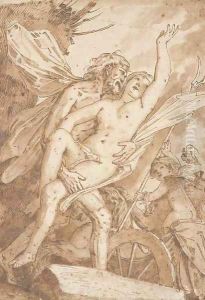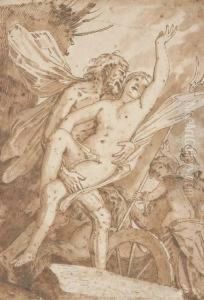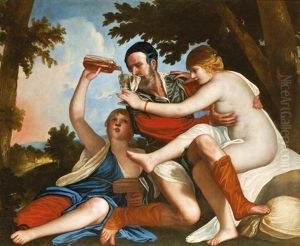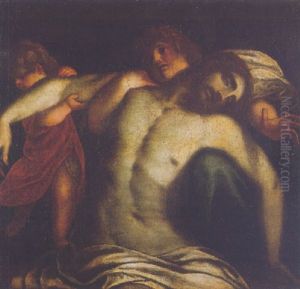Ottavio Padovanino Paintings
Ottavio Padovanino, born Alessandro Varotari in Verona, Italy, in 1582, was a prominent Italian painter and draughtsman of the Venetian school. His nickname, Padovanino, which means 'the little Paduan,' is somewhat misleading as it suggests a connection to Padua, whereas it actually refers to his father, Dario Varotari the Elder, a painter and native of Padua. Padovanino's work is often characterized by its sensuousness and detailed attention to the human form, qualities that align him closely with the Venetian tradition of the late 16th and early 17th centuries.
Padovanino received his initial training from his father, who was also an accomplished painter, and possibly in the workshop of the distinguished Venetian artist Paolo Veronese. This early exposure to the richness of Venetian colorism and the dynamism of Renaissance art profoundly influenced his stylistic development. Throughout his career, Padovanino was known for his mastery in various genres, including religious and mythological scenes, portraits, and landscapes. His ability to infuse traditional themes with a fresh, vibrant energy made his work highly sought after by patrons of the arts in Venice and beyond.
One of Padovanino's most celebrated works is the 'Assumption of the Virgin' for the church of S. Francesco della Vigna in Venice, a painting that exemplifies his skill in handling large-scale compositions and his adept use of color to convey depth and emotion. He was also praised for his contributions to the decoration of the Doge's Palace in Venice, where his frescoes and oil paintings added to the prestige of the already illustrious building.
Despite his success, Padovanino never established a large workshop or school, unlike many of his contemporaries. Instead, he focused on the quality of his output, often revisiting and refining his works. His influence on the Venetian art scene was nonetheless significant, and his techniques and stylistic choices would be echoed in the works of later Venetian painters.
Padovanino died in Venice in 1630. His legacy is preserved in the collections of major museums around the world, where his paintings continue to be admired for their beauty and technical prowess. Through his contributions to the Venetian Renaissance, Padovanino remains a pivotal figure in the history of Italian art, bridging the opulence of the 16th century with the emerging Baroque sensibilities of the 17th century.



